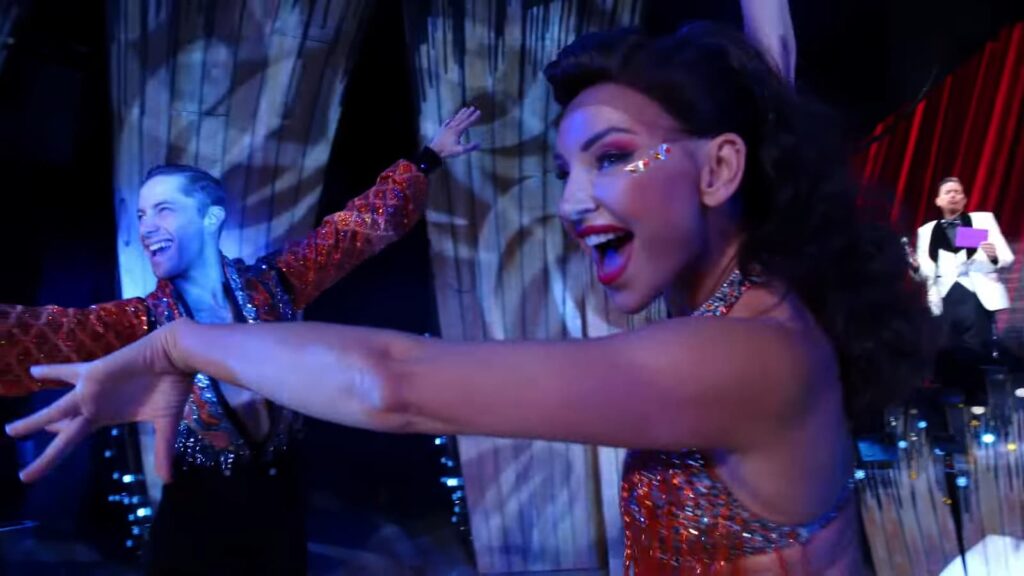
Review: ‘Strictly Ballroom’ at Birmingham Hippodrome
The arts have always been a reflection of society, offering insights into our world and ourselves. From ancient plays to modern musicals, performances serve as a powerful medium for storytelling. Today, we delve into a review of Baz Luhrmann’s “Strictly Ballroom – The Musical” at the Birmingham Hippodrome, keeping in mind the impact such productions have on audiences.
‘Strictly Ballroom – The Musical’ at Birmingham Hippodrome
In a world where dance defines one’s very essence, Baz Luhrmann’s “Strictly Ballroom – The Musical” pirouettes onto the stage of Birmingham Hippodrome, capturing the tale of two unlikely dance partners, Scott and Fran. The narrative shines a spotlight on the restrictions of traditional ballroom rules and the journey toward authenticity.
The narrative is commendably original, revealing Scott’s dilemma of being trapped within the confines of ballroom’s stringent techniques and Fran’s lack of technical prowess but abundance of Latin passion. Together, they embark on an enlightening journey, learning from each other and gradually completing one another’s missing dance puzzle pieces.
However, from a theatrical perspective, the musical is not without its flaws. The first act heavily focuses on Scott’s world, laden with dance routines that prioritize technique over authentic expression. It’s only towards the end of this act that the audience is treated to a burst of genuine choreography, brought alive by Fran’s father, portrayed passionately by Jose Agudo. The power-packed Habanera sequence with Fran, Scott, and the ensemble electrifies the stage, making the preceding sequences appear somewhat underwhelming in contrast.
An attempt to compensate for the lack of dynamic dance in the initial scenes resulted in an overcrowded stage. With superfluous characters populating each scene, the outcome felt chaotic. Kevin Clifton’s portrayal of Scott is commendable, vividly expressing the character’s inner turmoil. Maisey Smith, playing Fran, delivers a captivating performance, both in terms of her vocal brilliance and her on-stage chemistry with Kevin. However, certain scenes, meant to be intimate, felt overshadowed. An instance being the roof-top scene where the delicate mood is interrupted by a sudden, overpowering chorus of “Time After Time.”
Post-interval, the musical regains its footing, harmoniously blending music, dance, and drama. The character of Barry Fife, played by Gary Davis, stands out, and the culmination with the Paso Doble sequence lets Maisey Smith dazzle the audience with her dance prowess.
In essence, while the second act radiates brilliance, the first act’s shortcomings cannot be overlooked. A deeper focus on the core narrative, rather than an excessive glitter of sequins, might have elevated the entire experience. Additionally, a recurrent feedback from attendees highlights the overtly “screamy” and “shouty” dialogues which could have been modulated for a better auditory experience.

In the realm of creativity, the credit goes to Baz Luhrmann and Craig Pearce for the compelling book. Craig Revel Horwood’s direction and co-choreography, in conjunction with Jason Gilkison, deserve acknowledgment. Mark Walters’ set and costume designs provide a visual treat, while Stuart Morley’s orchestration binds the musical elements seamlessly.
Cast & Crew
- Scott Hasting – Kevin Clifton;
- Fran – Maisie Smith;
- Shirley Hastings – Nikki Belsher;
- Doug Hastings – Mark Sangster;
- Barry Fife – Gary Davis;
- Les Kendall – Quinn Patrick;
- JJ Silvers – Oliver Brooks;
- Rico – Jose Agudo;
- Abuella – Karen Mann;
- Wayne – Kieran Cooper;
- Vanessa – Maddy Ambus;
- Liz – Agnes Pure;
- Tina Sparkle – Danielle Cato;
- Ken – Benjamin Harrold;
- Nathan – Adam Davidson;
- Pam – Poppy Blackledge;
- Charm – Jessica Vaux.
Creatives:
- Book – Baz Luhrmann & Craig Pearce;
- Director & Co-Choreographer – Craig Revel Horwood;
- Co-Choreographer – Jason Gilkison;
- Set & Costume Designer – Mark Walters;
- Orchestration & Musical Supervisor – Stuart Morley;
- Lighting – Richard G. Jones.
Conclusion
In conclusion, “Strictly Ballroom – The Musical” is a tapestry of dance, love, and the quest for authenticity. While it has its missteps, the overall performance offers a memorable experience that resonates long after the curtains fall. You might be interested in a review on Betty Blue Eyes at The Union Theatre.